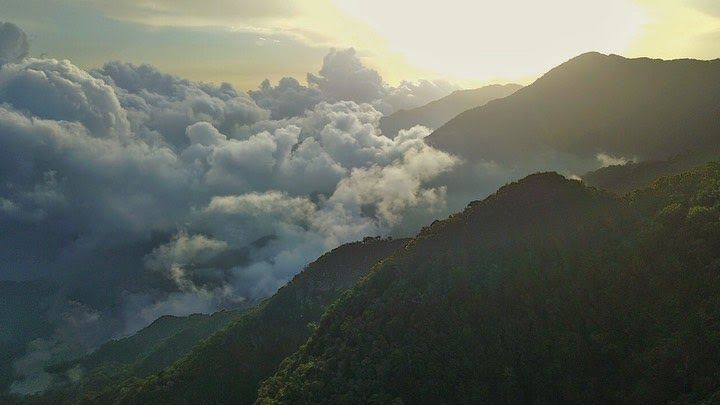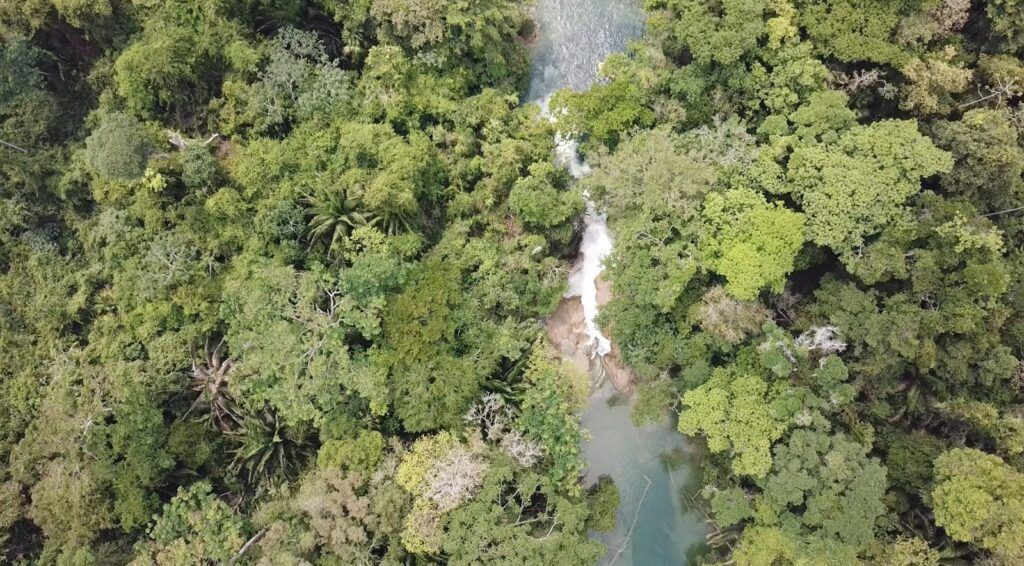Life on Earth is dying and our food systems are largely responsible. Industrial food production has devastating effects on our climate, our ecosystems, our health and our communities. Nangu reimagines our food system in a way that supports local communities, grows new ecosystems and protects existing ones. Using regenerative farming, Nangu will restore man made damage and revert climate change. The food produced by Nangu farmers will improve our health, protect biodiversity and help millions get out of poverty.
The problem
Planet Earth is rapidly falling out of balance and urgent action is necessary. The magnitude and complexity of the planetary challenges is daunting. CO2 levels threaten to warm up the planet and to make large portions of Earth uninhabitable for mankind. We have lost a third of the arable land in the past four decades due to destructive farming practices. If we continue to lose soil at present rates we have 60 years of harvest before complete breakdown of our food systems. By the year 2025 two thirds of the world will live in water stressed areas. Earth is facing the 6th mass extinction of biodiversity. Under these circumstances, there is unparalleled social unrest and suffering on the horizon. This is a man-made crisis and perhaps the only silver lining is that humankind may have a chance of solving it as well.
How did we get here?
In the industrial revolution we drastically changed our relationship with Earth. We built a society fueled by coal and petroleum and supported by a centralized infrastructure to extract, process and distribute these energy sources. In the mid 20th century, the “Green Revolution” followed the trend and began a shift from small biodiverse farms working with the natural cycles to industrialized farms using a mechanistic approach based on monocrops. We fed the crops with petroleum based fertilizers and then use an adaptation of WW2 nerve gas as pesticides. After decades pests became so resistant to the poison sprayed on our food, that they have grown stronger into megapests. Farmers stopped working with nature and started working against nature. Today, if you stand in the middle of a soy megafarm in Brazil you’re baffled by the silence and monotony of the landscape. No trees, birds, insects, weeds, grass or creeks. Just a lifeless carpet of soy until the horizon. Industry’s efficiency relies on scale, centralization and standardization. Accordingly, we’ve reduced our agricultural biodiversity to the point were today “75% of the world’s food is generated from only 12 plants and 5 animal species”. We have effectively converted nature into a factory.
We overlooked the fact that soil is a living community of microorganisms and creatures vital for healthy crops to thrive. We combined heavy machinery that compacts the soil with poisons that kill most living creatures. The result is dead soil. Plants don’t grow well in dead soil. It makes them more susceptible to disease, droughts and floods, and therefore more dependent on agrochemicals to keep them alive. Dead compacted soil is also incapable of absorbing enough rain water. This prevents recharging aquifers and lets precious topsoil full of minerals and organic matter erode. The runoff ends up in our rivers, lakes and seas creating dangerous dead zones.
The soil can be an important carbon sink and by using sustainable farming practices can sequester around 10% of man-made emissions. Cutting primary forest, poisoning soil and water, using nitrogenated fertilizers, intensive cattle production and industrial farming practices are emitting large amounts of greenhouse gases. According to a recent report from the IPCC the food system overall produces up to 37% of man-made greenhouse gas emissions. More than any other industry. Yet we waste 30% of all food produced and ship it on average 1200km to reach our plates. If carbon emissions continue as usual we are looking at a catastrophic 3° degrees celsius global warming by 2100. That means life on Earth will look nothing short of apocalyptic.
Social impact
The social side of our food system is equally discouraging. Small local farmers around the world are outcompeted by subsidised, foreign commodity food and large scale industrial farms. A common story is that after a few bad harvests, these farmers ran into a spiral of debt and lost their farms to find themselves either working in near slavery conditions for industrial farms or joining an exodus of people moving into the cities, with small chances of improving their life conditions. Chronic disease and despair are common in communities that followed the recipe of industrial farming by using patented seeds and expensive, toxic chemicals. Many have lost access to drinkable water for decades after their watershed was poisoned with agrochemicals. Indigenous children are urinating pesticide residues. With the dramatic loss of pollinators farmers need to pollinate by hand. We are farming our own destruction by promoting and subsidizing these practices. The common argument to defend the industrial food system is that “we must feed the world”. However, the facts do not support this claim, research shows that 70% of the world’s food comes from small farms and that “small farms tend to achieve higher yields per hectare than larger farms”.
There is a failure in our economic system that allows companies to profit without being held responsible for the natural and social destruction that they cause. We have allowed industrial farms to externalize much of their negative costs to society and to offer their products below the true cost to society. We have created a system that rewards destructive practices, making it really difficult for small farmers to feed us using regenerative practices.
Towards a solution
In the field of alternative food systems we find a wealth of agro-ecological practices. It is a small but growing movement that applies organic agriculture, regenerative agroforestry, permaculture, biodynamic farming or syntropic farming just to name a few. These initiatives tend to work in isolation and often miss the competitive advantages of large-scale food production. Nonetheless, ecological farms are known to produce more food and create more jobs per hectare, regenerate soil, avoid the use of toxicants, are champions of agrobiodiversity, carefully manage water, save and share heirloom seeds and produce safer food. They also perform better in drought and flood events, are safe for neighboring communities, strengthen the local economy and tend to be respectful of the local culture and traditions. Their success is based on the health of the ecosystem and the people.

You are probably wondering, if agro-ecological farms are so great, why aren’t they our everyday choice everywhere in the world? Well, it is complicated, but it comes down to economics. The nature of the agro-ecological approach results in a very diversified variety of products with smaller volumes of each product and less predictable times of harvest than an industrial monocrop system. It is harder to standardize and achieve large economies of scale.
Price, scale and diversity
Let’s talk about price. Small ecological farms walk the extra mile to protect the environment, water and community. By covering the true cost of production they are at a disadvantage competing against industrialized farms that externalize the cost of their impact. Farms often need a certificate to access markets willing to pay higher prices for ecological and healthy foods, to prove their higher standards. This means paying for an organic, fair trade, biodynamic or sustainability certificate and backing it up with a lot of paperwork to show that you are doing things right. In addition, they need to keep a protective perimeter to shield their farm from airborne agrochemicals. They also need to keep strict controls to avoid their product being mixed with others during distribution and storage.
A small ecological farm has a very diverse range of products. The products with a short “shelf-life” need to be transported and sold quickly in local markets like farmers markets and health food stores. This can often be a sizable portion of the production and the local markets are often not available or big enough. Another option is to process the produce into higher value products with a longer shelf-life. It is a challenge to do this efficiently and comply with food safety regulations for small batch production. The commercial food grade infrastructure and tools necessary are typically expensive. The permits to register and sell processed food can also be costly. As a small farm you probably have many different products in small amounts, making it hard to justify the time and money to make each product legally compliant.
If the immediate local market is not big enough there is the logistical challenge of sending products to other markets. If the farm has access to a truck (that is a big if in the global south) then the farmer and probably someone to help will need to spend one or two days selling at farmers markets and/or delivering to restaurants and stores. This is valuable time not spent on the farm. If the farmer has no access to transportation, it is sadly common to fall prey to unscrupulous intermediaries that will pay a price near or below the production cost and resell the products elsewhere making most of the profit.
Nangu: A new story
We chose the name Nangu because it means “home” in Chorotega, a disappeared indigenous language from Central America. It is a reminder that when you don’t take care of what you love, you risk losing it, just as the nearly 200 species that go extinct every day. It is a calling to take care of mother Earth and all living beings. Now, let’s explore how!

Imagine the predicament of a farming family who had lost their farm. What if instead of underpaid labor or city slums there was a third option? Let’s imagine an alternative where the family is offered access to land, the resources to turn it into a productive food forest, the education necessary and a marketplace to sell their products.
It would all start with a “Stewardship Education Program” using a hands on farmer-to-farmer methodology to transform old degraded farmland into a vibrant food forest. Using well tested regenerative agroforestry recipes the soil would first be enlivened using microorganisms, compost and biochar, hand in hand with pioneering plants to break the compacted soil and build precious organic matter. Next, the trees that will provide food, habitat and materials in the future are strategically planted next to fast growing beneficial plants that provide protection and nutrients to the trees as well as food and cash crops to the forest stewards in the early years.
Now imagine the family farm turning into an established food forest. A diversity of healthy foods, medicinal plants, bioconstruction materials and enough to share with the wildlife that will also claim it as their home. The neighbors in all directions will also be forest stewards, growing food under the same ecological principles and a common production plan. Zoom out and see hundreds of small food forest farms, collectively creating a large scale forest where it used to be only degraded land and dead soil.
The land would be owned collectively as a commons, and each family would have exclusive use of the land assigned to them so they can care for it and plan for the long term. To work in a commons entails agreements on the way the land is used, putting in place incentives to keep the members aligned to the core values and the noble cause of the community. It is a self balancing distributed system, in tune with the ecological and social boundaries of the place. It gives a great deal of autonomy and self determination to the different stakeholder groups within their area of influence while simultaneously ensuring that the collective’s core values are respected.
Having a network of stewards producing according to a common production plan opens the opportunity to economies of scale. It becomes possible to create a series of local micro factories that can process the diverse harvest from the forest into high quality products. For example, if the stewards have cacao trees, it is easy to bring the harvest to the local micro factory where a world renowned chocolatier has trained the community to produce a spectacular chocolate. The value of fine chocolate is far greater than selling the dried beans as a commodity. The potential of local microfactories extend to all kinds of food, medicinal plants and eco building materials. A distributed green industry can sprout from the creativity of the steward network in cooperation with world class chefs, scientists and eco builders. A microfactory network can solve the common challenges of isolated agro-ecological farms by combining the output of the farms and transforming it into a diverse range of high quality products, guaranteeing regenerative standards. The combined volume also facilitates the logistics and access to eco ethical markets at local, national and international level. It is an organized steward network that farms, transforms and sells the products of a regenerative food forest to multiple markets.
Now picture the other family in this story. The one that will enjoy amazing, healthy and regenerative forest products. Knowing that their purchase is helping restore the Earth’s balance and supporting the families of the forest stewards. The “enjoyers” will be able to scan a code in each product that will reveal its origin, the people that produced it and the transformational story of the place that grew it. With the same spirit of radical transparency, the selling price will be disclosed to all the stakeholders that contributed in the creation of the product and the income will be shared transparently amongst all of them. No matter how far away both families are, they will be connected.
Nangu envisions the use of technology in the service of the core values and as an enhancer to traditional practices and wisdom. The elder’s knowledge on how to grow food and overcome agricultural challenges can be systematized in an AI knowledge base to be shared amongst stewards across nationalities. Traditional practices of governance and decision making inspired in the commons, will be supported by a voting app. The trust built between farmers and enjoyers at a local market can be extended through distances by the use of a blockchain based tracking mechanism linking the product to the farmer as well as their story and production ethics. The meticulous measurement of trees to calculate the growth and carbon capture of a forest can be enhanced by drones scanning and rendering a forest 3D model in a fraction of the time. It is worth emphasizing that technology is a tool to serve people and values and not the other way around.
Nangu’s special interest is to use the regeneration of vast food forests as a protection barrier to old growth forest that are currently under threat of being swallowed by the industrial farmland expansion. We embrace the commitment to protect the remaining reservoirs of biodiversity held in tropical forests by reverting the damage around them and making sure that the forest stewards in charge thrive doing so. Let’s turn the dire concerns brought by the climatic crisis into inspired action that addresses the global challenges in a responsible and humanized way. This is an invitation to change the course of history with a down to earth approach.
Nothing is as powerful as an idea whose time has come. – Victor Hugo
In summary, Nangu is developing a replicable model that enables local community to become stewards of food forests that they will grow on degraded land creating a buffer zone around forest conservation areas. The Nangu community will enable access to land and education to selected landless farmers for the opportunity to become forest stewards. Nangu’s democratic governance system will enable the network of small farms to work together, to manage an array of local micro-factories and to gain access to eco-ethical markets. The value chain will be made radically transparent using blockchain technology to track forest products from farm to fork and fairly distribute income based on the value that each stakeholder provides, from investors to farmers.
We created this crisis and we have a chance to solve it. It is going to take reforesting an area the size of the USA, about 1 billion hectares of land to erase 100 years of man made emissions. We join a movement of several other promising projects to help reduce emissions and to plant trees. Nangu aims to take responsibility for 10% of that effort, with the goal to plant 100 million hectares of food forests and to help bring tens of millions of people out of poverty. The forest stewards will create a better life for themselves and for all of us by farming with nature, enhancing the soil and preventing water stressed scenarios by revitalizing watersheds. We are running out of time, but we can still make it. Tomorrow is in our hands. Together we can bring Nangu to life and grow a forest to call home!
Please follow our blog for more details on Nangu as it evolves.
If you want to contribute to the propagation of food forests around the tropics please reach out at f[email protected]




